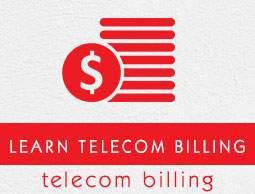Telecom Billing - Products & Services
Let us suppose a telecom operator like Airtel wants to set up a billing system of its own. Then, Airtel would have to first define its products and services by its sales and marketing department before moving on to set up a billing system.
What is a Product?
A product is a logical or physical entity, which can be sold out to an end customer by the operators. This could be a mobile phone, internet connection, Voice call connection, VPN, Video on demand, Digital TV connection, etc.
A product can have its monthly rental, which we call periodic charges also. A product can be usage generating product or non-usage generating product. A usage generating product is sometime called event generating product and non-usage generating product is called non-event generating product.
For example, voice call connection, which comes along with a phone number, is a usage generating product because it generates usage whenever end customer uses this product to make a voice call. A simple phone set without a connection is a non-usage generating product and it could be given to a customer based on monthly rent only. So even if, a customer is not using it, he has to pay monthly rental.
What is a Service?
When we talk about them from marketing point of view, as such there is no difference between products and services because most of the times, both are used interchangeably by different billing and marketing experts.
Simply put, an operator uses its products to provide voice services to its customers. An international call can be called a service provided using a voice call connection. Another example could be 800 number call may or may not be available through a particular operator, call waiting, call forward could be said a service provided by a model of a phone set or by an operator.
This tutorial will use Product and Service terms interchangeably. Keeping it simple, Products are the items that customers can either buy outright or lease. products may be −
- Real objects (a mobile phone, for example)
- Services (a call waiting service on a telephone system, for example)
- More abstract concepts (a service level agreement, for example)
Product Families
Related products can be grouped together into a product family. Multiple levels of products are possible, so a product can be both a parent and a child at the same time.
In addition, each product family can have more than one parent product if required. Examples of product families are −
- Telephony services
- Cable TV
- Internet
- Leased Line
Group of Products(Packages)
Many a times, operators bundle more than one product into a single group and sell them as complete package. There are billing systems, which support bundling of various types of products together as a package. It can be offered at discounted price.
Packages allow a product to be offered to a customer at a reduced price if it is taken as part of a package. Each package can consist of any number of products and these products can be taken from more than one product family.
This package price plan for a product is usually different to its comparison (that is, non-package) price plan, as this is how the company offers a discount to the customer for buying the complete package. However, this is not mandatory, as a product can have one of its normal price plans assigned to it within a package.
Products Attributes
A product can have a number of attributes associated with them. Product attributes allow information about individual product instances to be held where the relevant information differs between types of product. For example, a pay TV product may have an attribute recording its set-top box number.
Further, a mobile phone product may need attributes to record the International Mobile Subscriber Identity (IMSI) and Mobile Station International ISDN Number (MSISDN).
Product Event Types
A product can have a number of event types associated with it. These event types govern the events that can be generated by the product.
For example, a mobile phone product could have event types such as voice calls and messaging services. There could be many more event types associated with a single phone device and operator can charge end customer for each of the event generated by the customer.
Billing System Perspective
Once your marketing department finalized all the products, services, packages and associated prices, they are configured in the billing system.
Different billing systems provide different levels of flexibilities of defining products and their hierarchies in terms of parent, child, and grandchild products.
Some systems are flexible enough to support packages and bundles and a few provide limited functionalities related to packages and discounted prices.
Some systems keep product catalogues separately from the price catalogues to provide better modular approach and some billing systems combine products descriptions, their features, and associated prices altogether.
Once all the products, services, packages and their events are configured in the billing system, next step is to define their rental and usage prices, which we will cover in next chapter.
What is Next?
If you understood what is a product or service and package, then you can proceed to the next chapter to understand how their prices are defined by the marketing department available with any operator.


